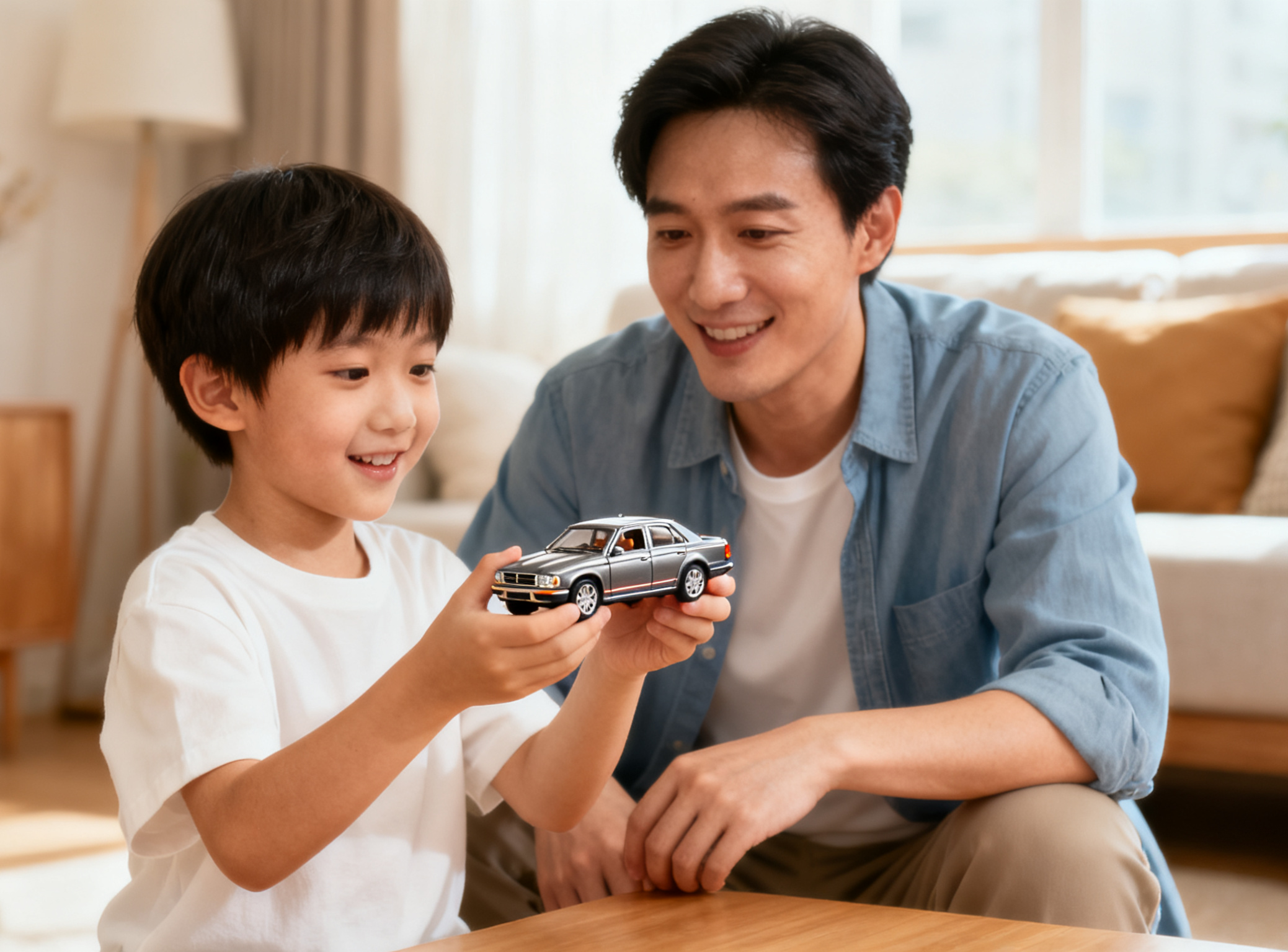When a 3-year-old boy holds a zinc alloy off-road vehicle model for the first time, the cool metallic touch spreads from his fingertips, and the precise sound of rotating wheels instantly calms him down — this scene is unfolding in countless families. Today's hardware alloy car toys have long transcended the label of "child-distracting tools" and evolved into a parent-child link that integrates safety, educational value, and collectibility. Behind the market scale exceeding 5.3 billion yuan in 2025 lies the profound pursuit of high-quality companionship among modern families.

Material Revolution: The Safety Code for Parents' Peace of Mind
"Material is the first criterion for choosing toys for kids," which is a consensus among most parents. Hardware alloy car toys precisely meet this core safety demand. Take zinc alloy, the mainstream material in the market, for example: its stable structure, composed of over 95% zinc combined with elements like aluminum and copper, fundamentally eliminates the risk of plasticizers found in traditional plastic toys. According to 2023 data from the National Toy Quality Supervision and Inspection Center, the over-standard rate of harmful elements in zinc alloy toys is only 0.3%, far lower than the 2.1% of other alloy materials, fully complying with the GB 6675.4-2014 safety standard.
This material advantage is even more considerate in details: Alloy engineering vehicle models produced in Chenghai, Guangdong, are manufactured through cold chamber die-casting for one-piece molding. Their edges undergo 12 polishing processes to ensure smoothness without burrs, eliminating worries even if children bite them. The water-based paint used on the surface not only delivers bright colors but also remains intact after 500 friction tests, solving parents' concerns about "paint peeling and accidental ingestion." With a weight controlled between 150-200 grams, the design retains the solid feel of metal while avoiding collision risks during play, perfectly balancing texture and safety.
Learning Through Play: The Growth Magic Hidden in Details
The charm of hardware alloy car toys further lies in their role as "visible mechanical enlightenment courses." In the exhibition hall of Qiju Model in Dongguan, a 1:64 scale racing model clearly displays the pipeline layout of the engine compartment. Its left and right opening doors adopt a micro-hydraulic structure, and it even reproduces the suspension system of real cars. This millimetric-level detail restoration subtly stimulates children's curiosity and desire to explore.
Educational experts have found that children aged 3-6 naturally observe the mechanical principles of wheel rotation when playing with alloy cars and develop spatial thinking by assembling parts of different vehicle models. Practice from an early education institution shows that children who frequently interact with alloy models have a 37% higher understanding of mechanical structures than their peers. Moreover, diverse product categories such as basic sliding types and electric-driven types are better adapted to the developmental needs of different age groups — from simple grasping training to complex scene construction, realizing a seamless connection between "learning through play."
Cultural Empowerment: Collectible Value Across Age Groups
"This is already the 12th co-branded model in my collection," said Xiao Li, a 28-year-old collector, as he showed his collection. Among them, the zinc alloy car model co-designed by Daniel Wu stood out — this product, which he supervised throughout the design and production process, sold out immediately upon launch, with a premium rate of up to 300% on second-hand platforms. This "toy-as-collectible" attribute allows hardware alloy cars to break through age barriers.
Data shows that in 2024, the sales volume of static display alloy cars reached 1.23 billion yuan, with consumers over 30 years old accounting for more than 60%, forming a dual-market pattern of "children's play + adult collection." From cross-border collaborations with classic animations to simulated models of new energy vehicles, from the integration of national trend elements to co-branded models with racing stars, hardware alloy cars are becoming carriers of cultural memories. More notably, the retention rate of such products in the second-hand market is 15%-25% higher than that of plastic toys, making each car a timeless keepsake that can be passed down.
Industrial Upgrading: China's Fine Manufacturing as a Global Business Card
Behind the popularity of alloy car toys among parents is the strong support of China's manufacturing industry. Three major industrial clusters, including Chenghai in Guangdong and Yiwu in Zhejiang, account for 78% of the national production capacity and can stably produce precision parts with a wall thickness of 0.8mm and a tolerance of ±0.05mm. In 2024, domestic enterprises upgraded green technologies such as chromium-free passivation and environmentally friendly die-casting, reducing production energy consumption by 20% while increasing export volume by 6.5% year-on-year, gaining a firm foothold in European, American, and Southeast Asian markets.
Innovations by leading enterprises are even more representative: Xinghui Entertainment invested 123 million yuan in researching and developing intelligent interactive alloy cars, realizing APP control and scene linkage; Qiju Model launched an "industrial tourism + cultural creativity" model, allowing consumers to witness the entire process from metal smelting to painting. These efforts have helped China's hardware alloy car toys break away from the label of "low-end OEM" and move towards the high-end market with an annual growth rate of 8.2%.
When a child puts an alloy car into a storage box, they may not know that this toy in their hand embodies breakthroughs in materials science and the ingenuity of manufacturing processes. However, the texture perceived through touch, the knowledge gained through exploration, and the emotions built through shared experiences will eventually become warm memories in their growth. In this era of rapid toy iteration, hardware alloy car toys, with the solidity of metal and the delicacy of craftsmanship, prove that truly good toys can always stand the test of time.

 English
English

